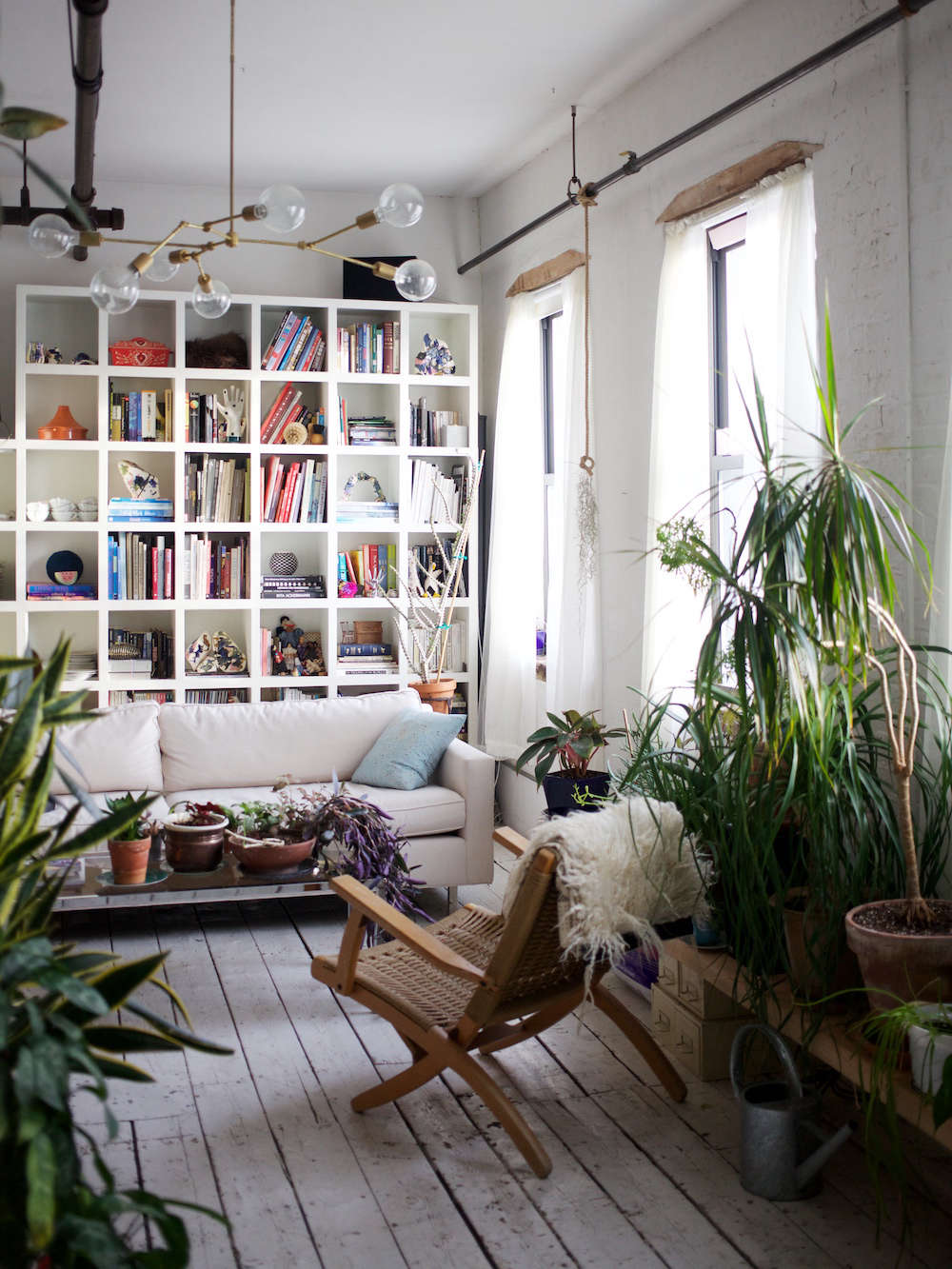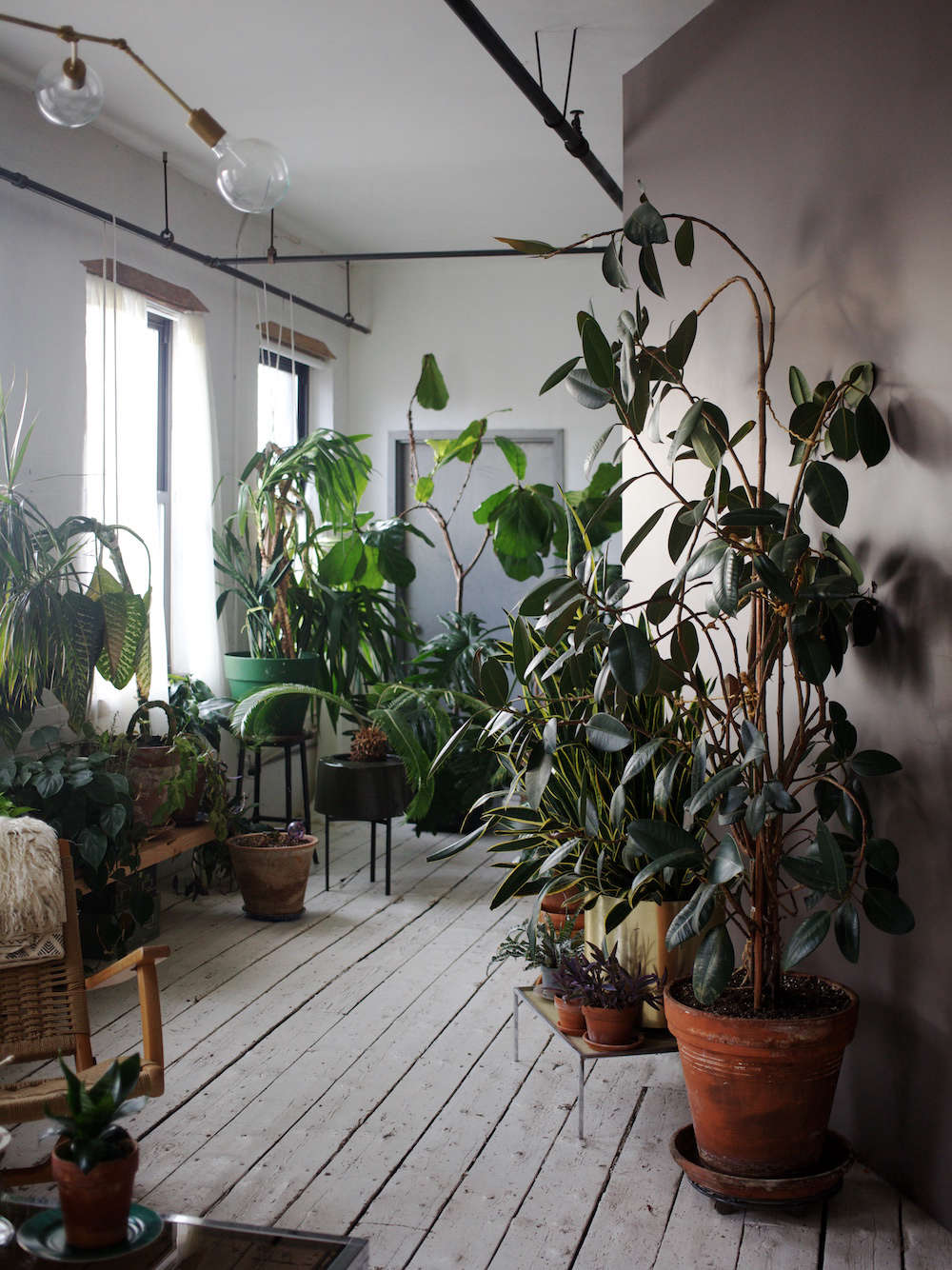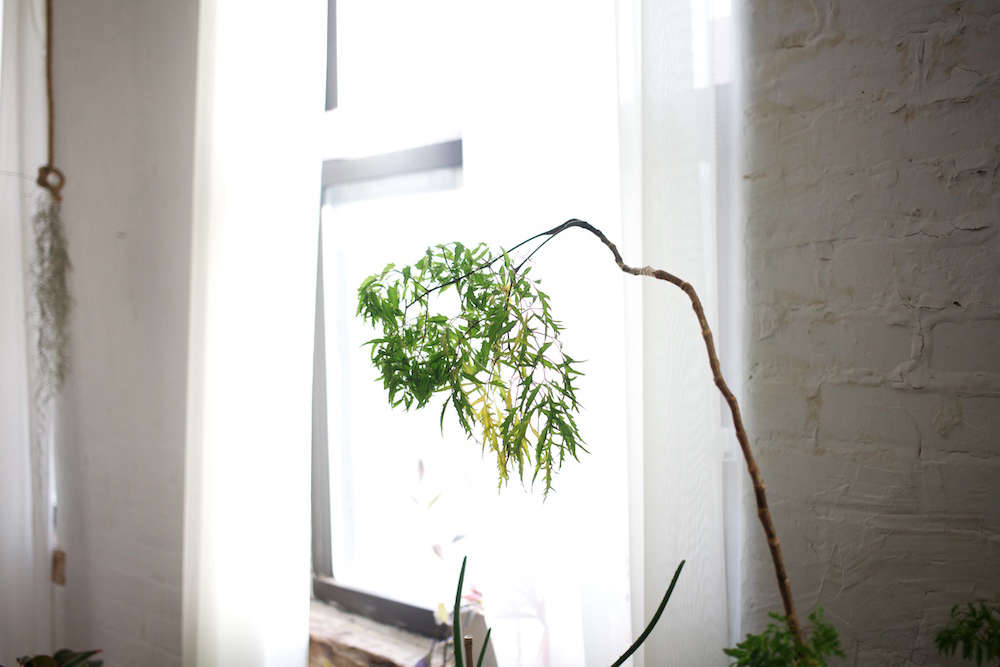Shabd Simon-Alexander didn’t set out to create a jungle. A New York City resident for her entire adult life, the textile designer had tried and failed for years to keep houseplants alive in dark city apartments. But when she moved into a spacious, light-filled loft in the Williamsburg neighborhood of Brooklyn, she toted along a few long-suffering plants—and they began to thrive.
“I thought I had a brown thumb, but it turns out I just didn’t have sunlight,” she said. She grew addicted to her newfound success, and soon, “I didn’t care about furniture or having things. I just wanted it to feel like a jungle in there.” She collected plants from nearby nurseries and moving sales, accepted cuttings from friends, and rescued rejects off the street. “Over the years, I just kept adding,” she said.
“I don’t know their names, and I don’t know the technical care they’re supposed to get,” she said. She doesn’t read gardening books or blogs, and doesn’t keep a watering or feeding schedule. “If I’m home and on the phone, I’ll be walking around, looking at them, pulling off dead leaves, and caring for them passively. But I never really learned anything about them.”
Let’s take a closer look at Simon-Alexander’s houseplants and the expertise she’s gained over time:
Photography by Emily Johnston.

“I buy a plant because I’m attracted to it,” she said, and is especially drawn to varieties she’s never seen before. But she says the most important factor in choosing a plant is finding the right fit between plant and caretaker. “It’s like looking for a partner,” she said. “One person could be handsome and talented and wonderful but you’re not necessarily going to click. They have to fit your lifestyle.” If one plant dies, she said, “we are not a good fit. Even if I loved the way it looked, I won’t replace it.”

Why so many plants? “One of the reasons I wanted this jungle is that I didn’t have any outdoor space in New York,” she said. “I don’t get out to the country much, so it’s a way to have nature around me all the time.”

“The lesson,” she said, “is to move your plants around to see where they want to live.” In theory, plants like more light, so one might think they want to be closer to the window. “I don’t know exactly what the plant was thinking, but it clearly was happier there.”

Simon-Alexander doesn’t keep a watering, pruning, or feeding schedule. “I’m also low-key with containers,” she said, opting for basic terra cotta pots or hobby ceramics from artist friends. When she does buy something special, it’s from independent makers such as Helen Levi or Recreation Center.

Later, she set the same aloe on the plant-filled coffee table. “It was leaning toward the sun and one day I opened the blinds,” she said. “I swear I saw it lean toward the window, and it fell over and broke the coffee table and a bunch of other plants.”


When she moved, Simon-Alexander announced that she was offloading some of her plants to make room for life in her new apartment. “People know me for having this jungle,” she said. “There were people waiting in line outside even before the sale began.”
The sale didn’t go as planned, however; Simon-Alexander backed out. “I knew I had to let go of some of my plants, but I wasn’t ready to,” she said. She moved them all to her new apartment—about a third as big as her loft—before accepting that it just wouldn’t work. She downsized, and “placed each plant with someone I know and they still send me pictures.”


The silver lining of being forced to move? Simon-Alexander now has a private roof space in a new apartment she bought with her boyfriend. “It’s a whole new world,” she said of her new opportunity to grow plants outdoors. “I’m a little daunted, but I can’t wait to try it; I’m really excited.”
Explore more of our favorite houseplants:
- Required Reading: Evergreen, Living with Plants.
- Gardening 101: Air Plants.
- 10 Easy Pieces: Glass Watering Bulbs.
Finally, get more ideas on how to plant, grow, and care for various houseplants with our Houseplants: A Field Guide.











Have a Question or Comment About This Post?
Join the conversation (3)